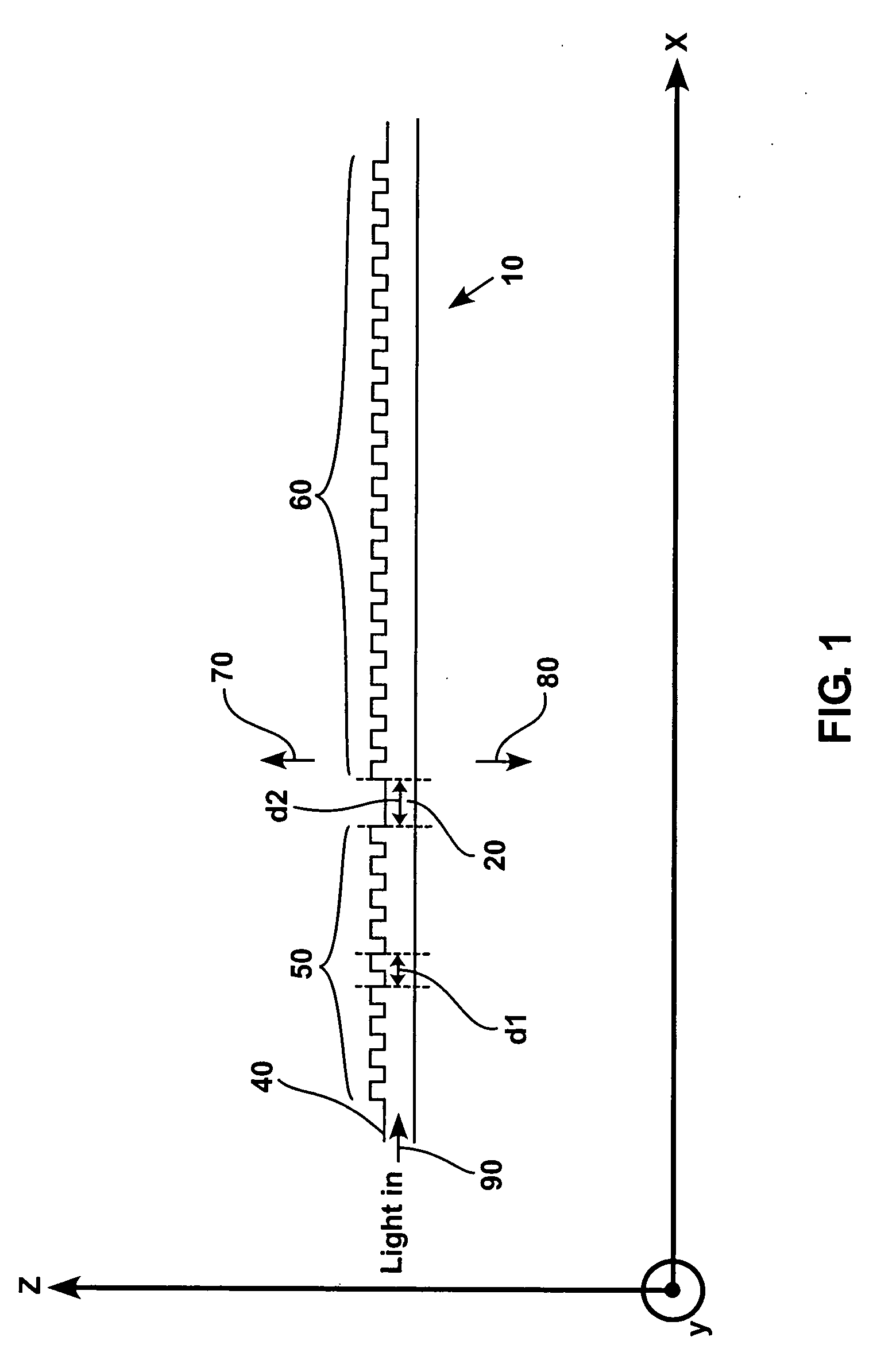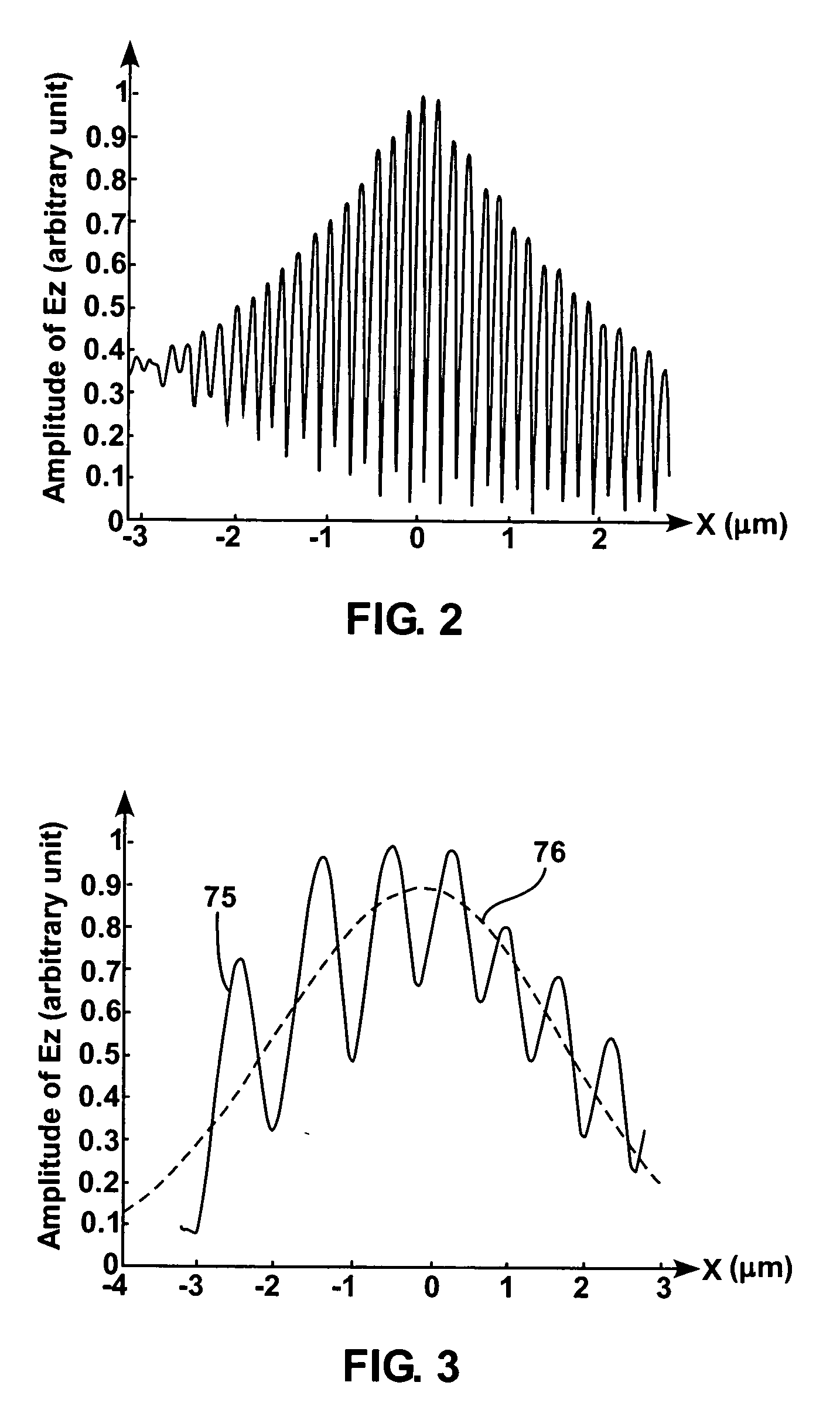Resonantly enhanced grating coupler
- Summary
- Abstract
- Description
- Claims
- Application Information
AI Technical Summary
Benefits of technology
Problems solved by technology
Method used
Image
Examples
Embodiment Construction
[0030]FIG. 1 discloses a cross sectional view of an exemplary embodiment of a coupler 10 with a defect 20 for an improved extraction of light around a right angle.
[0031] Referring to FIG. 1, light comes in to the coupler 10 from a waveguide 40 and is extracted up and down in the Z direction with a 90 degrees angle, as shown by arrows 70 and 80. Grates 50 are located before the defect 20 and grates 60 are located after the defect 20. The distance d1 between each grate of the grates 50 and each grate of the grates 60 corresponds to the Bragg condition for 90 degrees light extraction. In the embodiment shown in FIG. 1, the defect corresponds to a distance d2 between the last grate of the grates 50 and the first grate of the grates 60 which is different from the distance d1. The distance d2 introduced in accordance with the present disclosure depends on the profile of the extracted light and could be varied in accordance with the different uses of the coupler. For example, d2 could cor...
PUM
 Login to View More
Login to View More Abstract
Description
Claims
Application Information
 Login to View More
Login to View More - R&D
- Intellectual Property
- Life Sciences
- Materials
- Tech Scout
- Unparalleled Data Quality
- Higher Quality Content
- 60% Fewer Hallucinations
Browse by: Latest US Patents, China's latest patents, Technical Efficacy Thesaurus, Application Domain, Technology Topic, Popular Technical Reports.
© 2025 PatSnap. All rights reserved.Legal|Privacy policy|Modern Slavery Act Transparency Statement|Sitemap|About US| Contact US: help@patsnap.com



